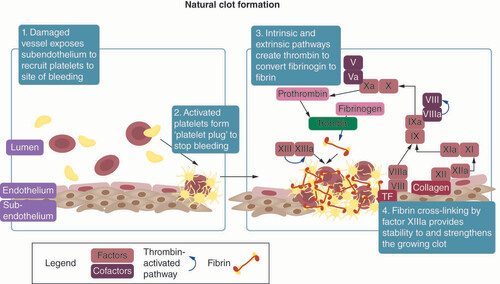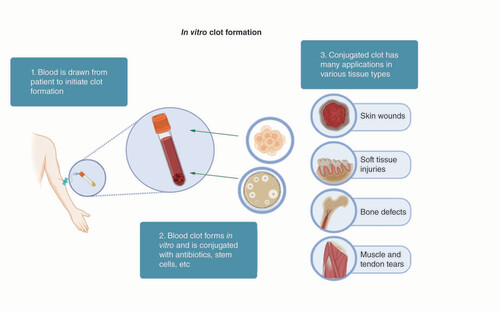Figures & data
The process of natural clot formation with associated factors, tissues and molecules.

Table 1. Comparative effects of blood clots versus blood clots conjugated with mesenchymal stem cells.
The strategy to use autologous blood clots in regenerative medicine, including: 1. blood preparation after being drawn from patients; 2. blood clot forms in vitro and can be conjugated with others, such as drugs, antibiotics, and stem cells; 3. use the conjugated blood clots to repair these injured tissues, such as skin wounds, soft tissues, bone defects, muscle, and tendon tears.

